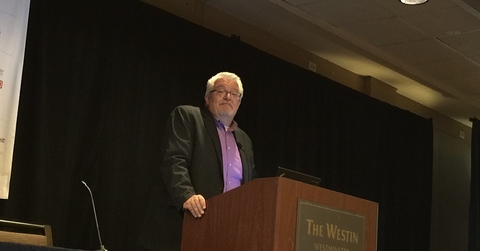As it moves forward with its SDN plans, CenturyLink has to deal with not only the future services that SDN will enable but also managing legacy services and processes—some that have been embedded in other telcos’ networks for the better part of 40 years.
CenturyLink, which last summer began transitioning its central offices (COs) to SDN via the Central Office Rearchitected as a Data Center (CORD) specification, noted that a big challenge is managing NEBS (Network Equipment-Building System) requirements.
NEBS compliance was developed in the 1970s by the former Bell Labs as a way to standardize equipment that would be installed in a CO.
RELATED: CenturyLink says CORD will reduce costs, increase broadband response times
The service provider recently completed this transition at a CO in Englewood, Colorado. Bill Walker, director of network architecture and innovation for CenturyLink, told FierceTelecom that the CO is not the most “friendly” environment.

“You can go with pure NEBS gear that’s not as dense and powerful due to the heat dissipation and power requirements or building off space that’s not NEBS space, which it turns out is very expensive and complex,” Walker said. “This requires a service provider to make the steel reinforced concrete walls and have your own power circuits dropped because you can’t run on the NEBS power because every time they do a generator test, you have to reboot your system.”
Adapting for NEBS
While the CO poses various challenges in migrating to SDN, the service provider is finding ways to work around the issue. The telco has been placing equipment in other places nearby or outside of the CO.
“We’re working on putting space to support SDN platforms outside, on the roof, the parking garage, or create a container where the rack itself is the NEBS boundary,” Walker said. “We’re working several different plans to get around to a 40-year-old answer of let’s build a wall.”
Fortunately, CenturyLink is seeing its vendor partners step up with solutions to bridge the divide between legacy and next-gen architectures.
“Our traditional IT vendors and supply chain partners are helping us define what are the boundaries for NEBS,” Walker said. “We’re working with the traditional telco vendors moving into the NFV and SDN space as well as IT providers like HPE and Dell.”
Despite the challenges, CenturyLink has implemented SDN in 44 of its 118 network edge sites. About 60% of the telco’s U.S. core network sites are running NFV and SDN services today.
The challenges that CenturyLink faces reflect the nature of being a traditional telco.
Alternatively, competitive providers like Masergy, which has had the benefit of not having to manage legacy network infrastructure, the transition to SDN is focused on enhancing the customer experience.
“The traditional telcos are looking at the transition to NFV and SDN to replace their legacy switches with blade services in their COs," said Paul Ruelas, director of product management at Masergy. “For us, it’s really at the customer site where we see the adoption of SDN, which is why we said how can we tie in the SDN orchestration with the network function virtualization on site to get the customers what they need in a single box solution.”
CORD drives broadband efficiencies
In March, CenturyLink began the deployment of its own virtualized Broadband Network Gateway (vBNG), which the company said will support its broadband services using the CORD design. At that time, the service provider said the vBNG milestone was key in enabling it to reach its goal of full global virtualization coverage in its IP core network by the end of 2019.
Unlike fellow telco AT&T, which is applying CORD for its PON-based FTTH network, CenturyLink is starting with its copper-based DSL networks. The telco noted that this is part of a broader effort to migrate to a software-based network architecture.
Adam Dunstan, VP of SDN/NFV engineering for CenturyLink, told FierceTelecom in an earlier interview that CORD will give CenturyLink a common architecture for any type of last-mile network, whether that’s copper-based DSL or fiber-based GPON.
“When we go and roll out DSL services, we have a certain bill of materials, which is quite different than the bill of material for equipment when we roll out GPON services,” Dunstan said. “As we move towards this style of architecture where we’re using white box switches and services, we end up with a uniform bill of materials irrespective of what access means we use.”
Service provider adoption of CORD continues to rise.
IHS found in its latest Routing, NFV, and Packet-Optical Strategies Global Service Provider Survey that 70% of respondents plan to deploy CORD in their smart COs.